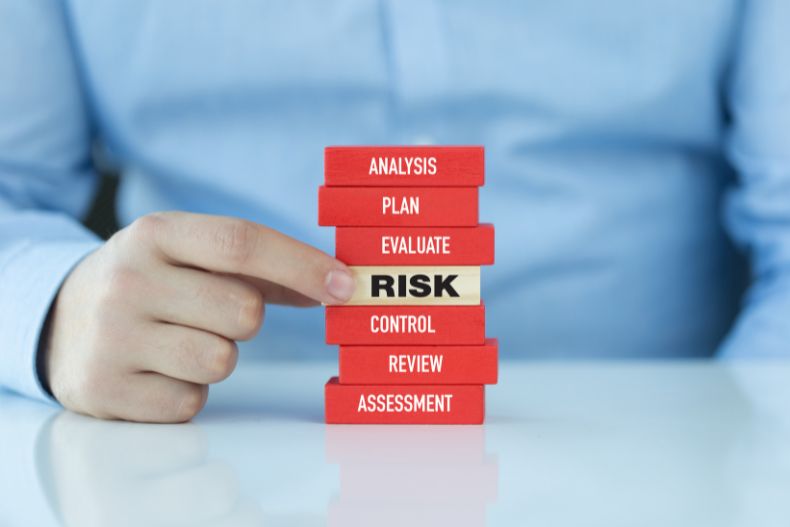Running a small business means confronting uncertainty head-on, from market fluctuations to evolving digital threats. In a rapidly changing marketplace, small business owners are not only focused on growth; they must also navigate a constant stream of potential risks that can threaten their stability and long-term success. Whether you’re managing delicate cash flow, confronting shifting consumer demands, or fending off cyberattacks, your readiness and ability to manage the unexpected often determine whether your company flourishes or struggles to survive. Early action and a strategic approach are critical; don’t wait until a crisis arises to protect your business from unforeseen events. By integrating practical risk management steps into every aspect of your operations, you not only prepare for the worst but also cultivate a culture of resilience that supports sustainable growth from the outset.
Unmanaged risk can harm your business’s reputation, regulatory compliance, and daily operations. Adopting a comprehensive risk management approach is crucial for identifying vulnerabilities, crafting agile response plans, and maintaining adaptability in a volatile world. This checklist helps identify vulnerabilities, create agile response plans, and secure your business, enabling you to weather uncertainty, capture new opportunities, and build trust with customers and partners.
Identify Potential Risks
Proactively identifying where your small business is vulnerable is the critical first step to meaningful risk management. No company is immune from setbacks or unforeseen events, but businesses that make the effort to anticipate and pinpoint threats gain a crucial advantage. Typical risks can span every aspect of operations, including:
- Financial Risks: Challenges such as fluctuations in cash flow, unexpected expenses, unpaid invoices, or increased debt that can quickly disrupt planned operations.
- Operational Risks: Disruptions in supply chains, sudden staff shortages, breakdowns in essential machinery or equipment, or human errors in service or production.
- Compliance Risks: Inability to keep up with shifting laws, regulatory changes, or failure to follow industry-specific guidelines, which can result in fines or operational shutdowns.
- Reputational Risks: Damage caused by negative press, dissatisfied customers, viral online reviews, or social media backlashes that can erode loyalty and brand value.
- Cybersecurity Risks: Increasing threats, including data breaches, hacking attempts, phishing scams, and ransomware, can compromise sensitive information and disrupt business operations, ultimately compromising business continuity.
Risks may originate internally, such as when a key employee departs unexpectedly, or externally, like market disruptions from new competitors or shifting economic conditions. Routine, structured risk assessments, conducted at least quarterly, enable you to identify weaknesses and blind spots early on, empowering you to take action before minor issues escalate into costly or reputation-damaging crises.
Categorize and Prioritize Risks
With a clear list of potential threats in hand, the next stage involves carefully evaluating the probability of each risk occurring, as well as the magnitude of its potential impact on your business. This dual assessment helps you allocate your limited time, attention, and resources where they’re needed most. For example, the risk of routine equipment fatigue might be common and disruptive but less devastating than a rare, large-scale cyberattack. Applying a risk matrix, where each risk is scored according to its likelihood and impact, brings clarity, allowing you to easily visualize which threats require urgent, high-level intervention versus those that can be best managed through regular operational improvements.
Develop a Risk Management Plan
Once you have prioritized your list of risks, the next essential phase is to design a comprehensive, actionable plan for addressing each one. This risk management plan should offer clear strategies for dealing with each major threat using one or more common approaches:
- Avoiding the Risk: Changing certain business processes, suppliers, or offerings entirely to eliminate specific risks from your operations.
- Controlling the Risk: Reducing the probability or impact of threats through preventative measures, such as strengthening cybersecurity infrastructure, performing routine supplier audits, or establishing rigorous quality control checks.
- Accepting the Risk: Acknowledging particular risks as inherent to your industry and preparing by budgeting appropriately or developing contingency plans to respond quickly should they occur.
- Transferring the Risk: Shifting financial or operational impact to third parties, such as obtaining comprehensive business insurance coverage or entering into contracts with vendors that absorb certain risks.
Your plan should assign responsibility and accountability for each aspect of risk oversight to designated team members. Additionally, foundational documents such as business continuity and incident response plans should be developed and regularly rehearsed so that everyone knows their role when a disruptive event occurs.
Implement Risk Controls
With your plan finalized, the effectiveness of your entire risk management program hinges on truly embedding these controls into daily business operations. Key risk control measures typically include
- Deploying robust cybersecurity solutions, such as firewalls, secure password policies, regular software updates, and employee cybersecurity training, to mitigate digital threats.
- Establishing routine preventive maintenance of all critical equipment can help reduce the incidence of unexpected breakdowns or production delays.
- Investing in ongoing employee training, covering health and safety practices, regulatory compliance, and response protocols for emergencies or security breaches.
- Developing and periodically testing a disaster recovery plan so that your business can resume operations quickly in the wake of a major incident, natural disaster, or infrastructure failure.
Continuous monitoring and enforcement of these protections are essential to building organizational resilience. Implementing technology solutions that track financial trends, flag compliance lapses, or audit security controls in real-time helps catch minor issues before they escalate. Ensure that all risk controls are thoroughly documented and subject to regular review and improvement, keeping your safeguards responsive to the evolving risk landscape.
Monitor and Review Regularly
Risk management is never a “set it and forget it” discipline. To remain protected, commit to ongoing evaluations and improvements, at least annually, but often more frequently as your business or the wider market evolves. Key components of a strong review process include
- Monitoring key risk indicators, such as cash flow metrics, support ticket patterns, and industry alerts, to identify early warning signs of emerging threats.
- Assessing the real-world effectiveness of current risk controls and making data-driven adjustments for better protection.
- Scan for new risks as markets shift, your product lines expand, or new technologies are adopted.
- Updating the risk management plan based on regular feedback, lessons learned from audits or after-action incident reviews, and changes in your strategic goals.
Embracing a mindset of continuous improvement not only safeguards your company’s day-to-day stability but also positions you to turn preparedness into a competitive asset. When risk management becomes central to your business DNA, you inspire customer trust and can pivot more quickly to seize new opportunities when competitors hesitate.
Frequently Asked Questions (FAQs)
Do I need business insurance if I already have a risk management plan?
Yes. A risk management plan helps reduce and manage risk, but insurance transfers financial liability to a third party. Both are essential—insurance provides a safety net for events that planning alone can’t fully prevent or predict, such as natural disasters or lawsuits.
How often should I update my risk management checklist?
Ideally, your checklist should be reviewed quarterly, or immediately after major changes in your business (e.g., new hires, service expansion, regulatory updates). Regular reviews ensure that your strategies stay relevant to current threats and business goals.
What’s the biggest mistake small business owners make when managing risk?
One of the most common mistakes is underestimating the impact of cyber threats or failing to prepare for digital risks. Many small business owners assume they’re too small to be targeted, but in reality, smaller businesses are often easier targets due to weaker defenses.
Final Thoughts
Building a resilient small business doesn’t happen by accident—it requires intention, insight, and consistent effort. By identifying potential threats early, developing a clear risk management plan, and regularly reviewing your strategies, you position your company not only to survive disruptions but to thrive in spite of them. Risk isn’t something to fear—it’s something to prepare for. And when preparation becomes part of your business culture, your small business gains a powerful edge: agility, trust, and long-term sustainability. The sooner you take control of your risk landscape, the sooner you can lead with confidence and clarity.
Looking to build a business that lasts? Explore our guide on the actions every entrepreneur should take when opening an online store to lay a strong, risk-smart foundation from the start.












